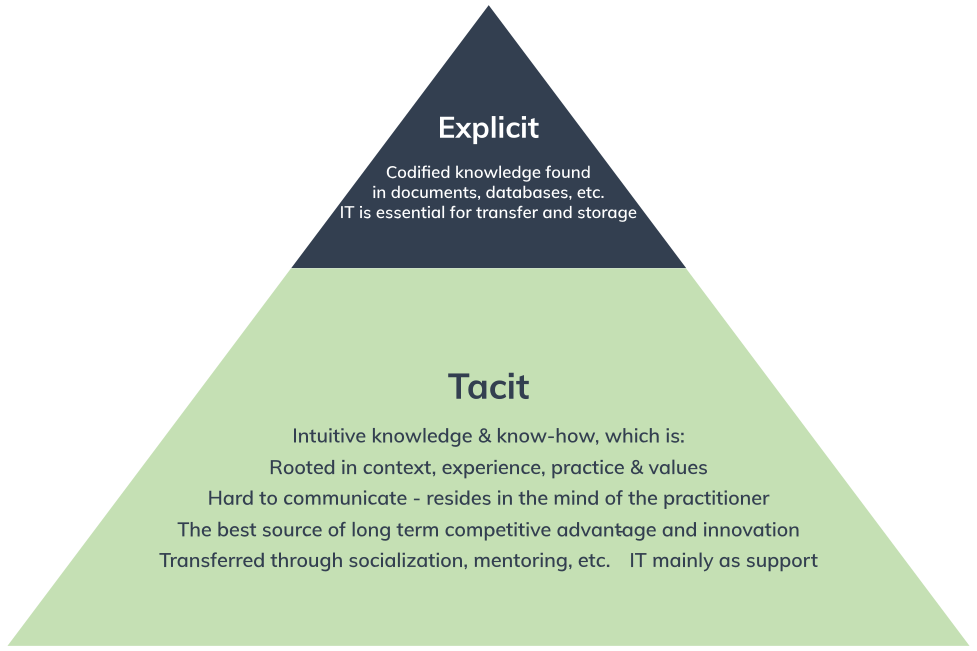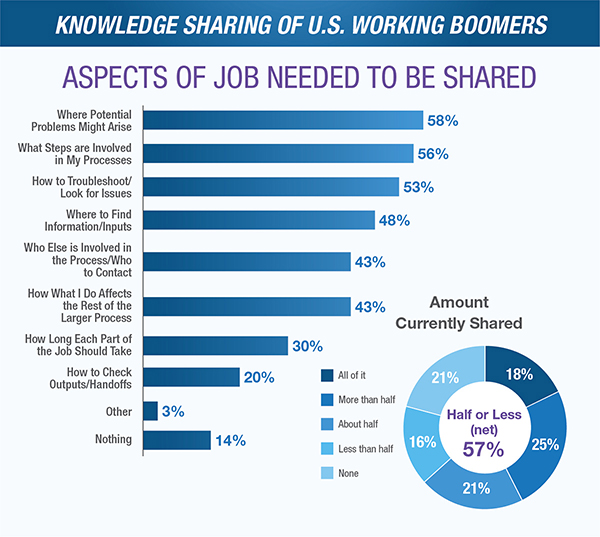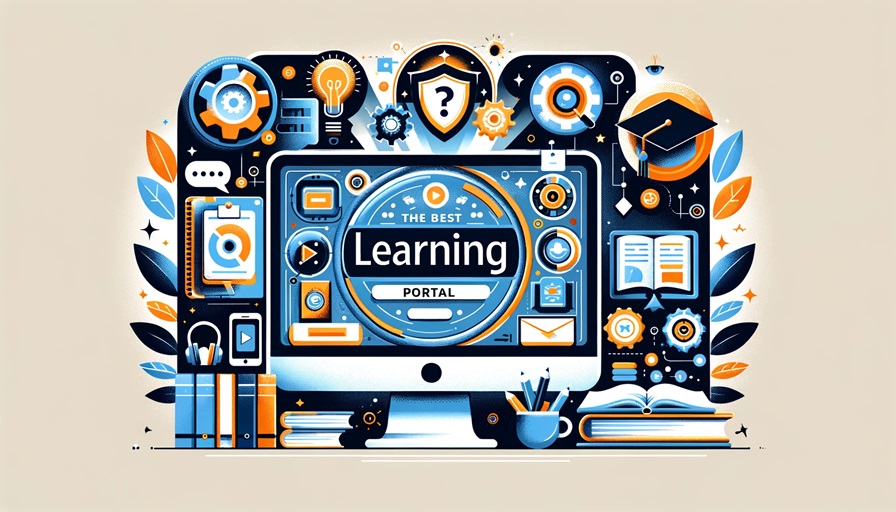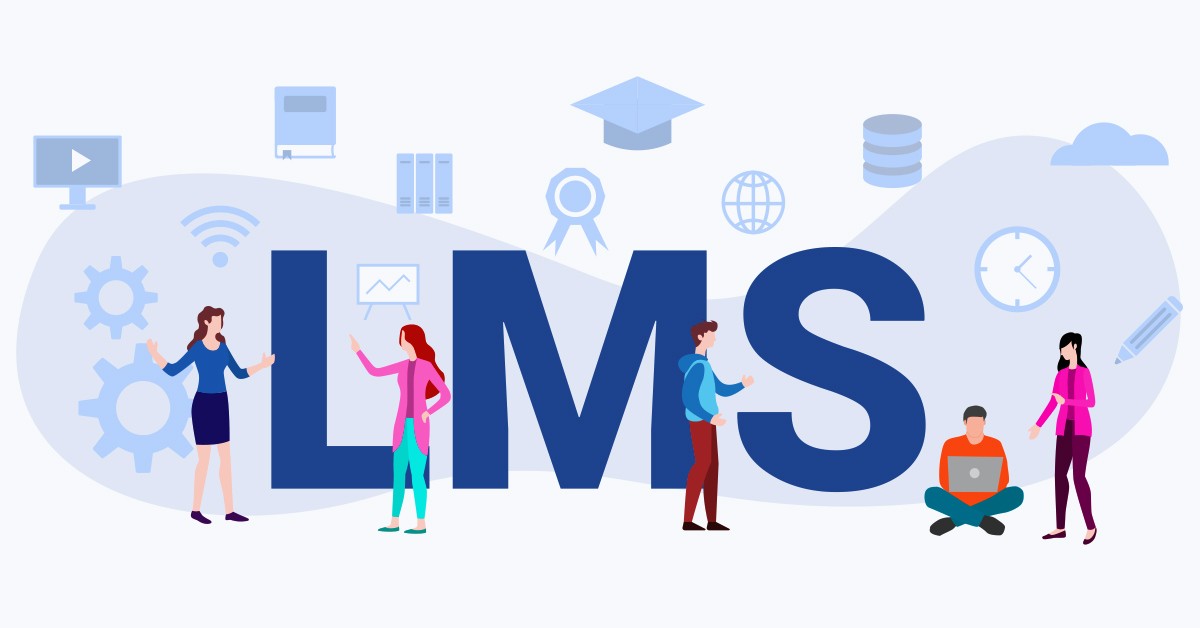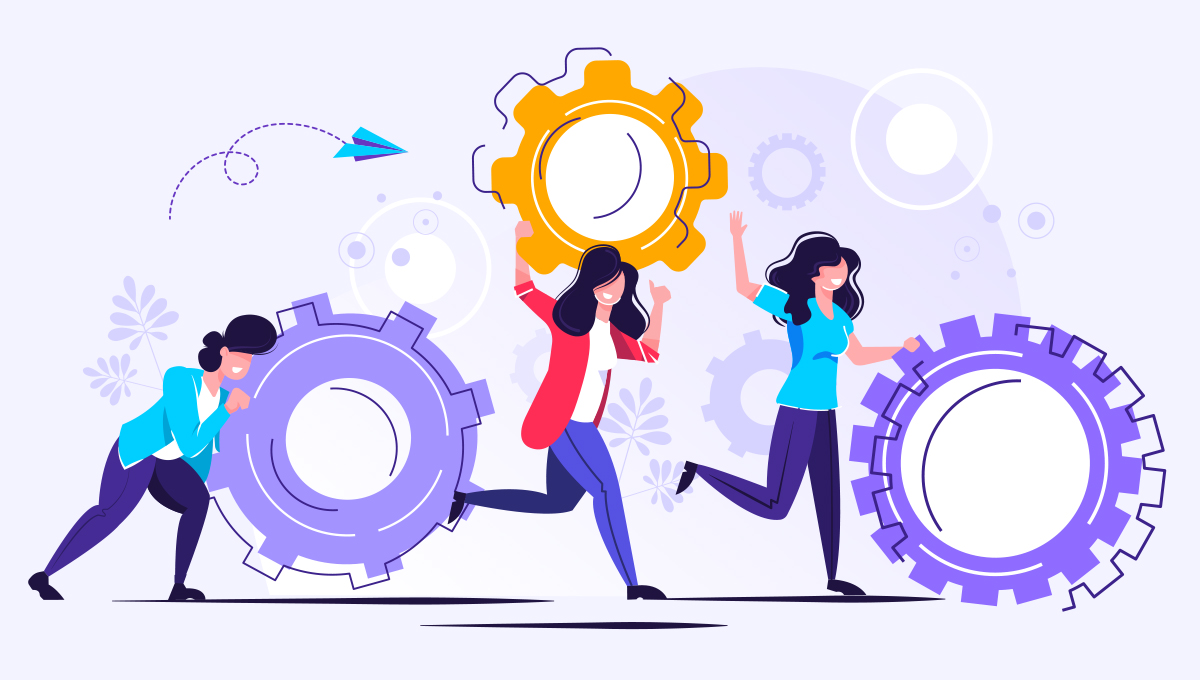
Effective employee and team training is a staple of any successful organization.
It simply has to be.
After all, if ongoing learning and development aren’t a part of your team’s processes, you’re going to stagnate — and fall way behind competing teams that are constantly looking to learn more and do better at every turn.
And it’s not enough to offer isolated training or professional development opportunities every so often, or when the need for training becomes painfully apparent.
(By that point, it’ll be much too late to stay ahead of the curve — and your team will end up merely trying to keep up with the evolving standards of your industry.)
Rather, learning and development should be happening all the time throughout your organization.
In this article, we’ll look at the power of continuous learning in the workplace, and what you can do to help your team adopt it as standard practice.
Continuous Learning in the Workplace
The concept of continuous learning in the workplace transforms the way teams approach professional employee development altogether.
Rather than seeing learning and growth as something that happens in isolation or at certain moments in time, the goal is for all team members to constantly be growing more knowledgeable and competent at all times.
It sounds daunting — but it doesn’t have to be.
The truth is, every moment on the job presents an opportunity for your team members to improve in some way or another.
(Really, most moments present multiple opportunities to do so.)
With every experience your employees encounter, they can potentially gain knowledge and skills that will help them:
- Grow in their current position
- Prepare for more advanced work in the future
- Become more engaged and immersed in your company’s mission and vision
The key word there:
“Potentially”.
Yes, continuous learning can occur at every turn — but only if your employees take full advantage of the opportunities that present themselves.
And it’s up to you to ensure they know how to do so.
Types of Learning in the Workplace
Learning and professional development can occur in a number of different ways within an organization.
As we discuss the different types of learning that can happen in the workplace, there are two things to keep in mind:
First, understand that learning (and teaching, for that matter) can be explicit or tacit— and often involves a bit of both. That is, employees sometimes learn from direct instruction or explicit explanations — and sometimes through observation and first-hand experience.
(Again, the best learning opportunities involve a certain degree of both.)
There’s also typically some overlap between the different types of learning we’ll be discussing. While it’s important to understand the different types of learning that can take place, they don’t – and shouldn’t — necessarily occur in isolation.
Formal Learning
Formal learning takes place during structured educational events, such as:
- Classes, workshops, or seminars
- Certification or licensing courses
- Lectures and conferences
Formal learning is more intentional on both sides of the coin:
- Teachers/Leaders develop a class or course to teach employees something specific — be it a skill, a process, or new knowledge.
- Learners attend the sessions intending to learn the material being taught.
- Formal learning is required to maintain compliance in many industries, but can of course be applied to non-mandatory areas, as well.
Either way, formal learning is often demonstrated and assessed via standardized methods like tests and planned observations.
Informal Learning and Social Learning
Informal and social learning fall under the same umbrella, in that they both occur in a more natural, unplanned way.
Informal learning is any learning that takes place over time while on the job. It’s absorbed via observation, experience, conversation with teammates — and by digesting informative content whenever necessary.
Social learning is the “conversation” part of the above — and then some. It’s learning by interacting with teammates, managers, mentors, and others in various ways, for various purposes. In-person meetings, Slack messages, intranet discussion boards (and more) provide infinite possibilities for organic social learning to take place.
Note that while both informal and social learning aren’t planned, they must be facilitated. We’ll come back to this in a bit.
Self-Directed Learning
As the name suggests, self-directed learning is that which is initiated by the individual learner in question.
Self-directed learning can be formal while still giving the employee control. For example, a new hire may have the freedom to navigate a team’s onboarding experience as they choose — but will ultimately still need to hit every essential point before moving forward.
Informal self-directed learning occurs whenever an employee actively decides to develop a skill or learn something new. Typically, this involves consulting mentors and colleagues, along with organizational knowledge and third-party resources — and can often lead to more formalized learning opportunities in the future.
Blended Learning
Blended learning can also occur formally or informally within an organization.
A formal example:
A team attends a live training seminar, then completes a short assessment afterwards. They’re then tasked with watching three short videos and reading two articles before responding to prompts on the team’s discussion board.
Here, we see elements of self-directed and social learning baked into an overarching planned instructional initiative.
Informal blended learning actually happens all the time — at least in high-functioning organizations. It’s the knowledge gained from watching experts do their thing, or from listening to their advice, or from shooting the breeze with colleagues at lunch.
(Once more, informal blended learning isn’t planned — but can be planned for. More later.)
How Can Employees Benefit from Continuous Learning?
Okay, the “big picture” answer to this question is self-evident:
The employee that’s always learning will outperform the one whose knowledge and abilities stagnate, every time.
Still, it’s important to understand the specifics behind why your employees should be focused on continuous learning.
1. Continuous Learning Improves Performance
Again, this much is obvious — but the impact to performance is certainly worth a quick mention.
According to Gallup, strength-based training and learning — a key tenet of continuous learning — can lead up to an 18% increase in employee performance. In focusing individual learners on their unique strengths and abilities, you’ll help facilitate growth in the areas that will have the highest possible impact on performance.
(And, of course, it won’t hurt for them to constantly be seeking out ways to improve on their weaknesses, either.)
2. Continuous Learning Makes Employees Adaptable
To be continuously learning is to be continuously adapting to new knowledge and information as it becomes available.
In short, adaptability is baked into continuous learning.
By adopting an “always learning” mentality, your employees will always be:
- Building on their current skill set and learning new things
- Working to overcome challenges and find new solutions
- Ready to change direction or tweak a process when necessary
Especially in fast-paced industries, this is an invaluable skill for modern employees to possess (and to continue flexing over time).
3. Continuous Learning Leads to Career Advancement
The more talented, knowledgeable, and adaptable an employee becomes, the more marketable they’ll be.
Ideally, you’ll provide the opportunities these ever-evolving employees are looking for in terms of career advancement. That way, you’re not only giving them the training they need to advance, but also providing a clear path to growth along the way.
If you can make that happen, they’ll have every reason to want to grow with your company.
4. Continuous Learning Increases Job Satisfaction
Having copious, ongoing opportunities to learn and grow is essential to overall job satisfaction for top-performing employees.
It goes hand-in-hand with pretty much everything we’ve said thus far:
If employees can continuously learn and grow — both in their current position and in their career — and are consistently enabled to do their best work, it’ll go a long way toward keeping them satisfied with their job.
The Impact of Continuous Learning on Business
As with the above, the overarching benefits continuous learning can have on your company are pretty obvious.
But the impact of being so open to ongoing learning is much further reaching that you might expect.
1. Continuous Learning Improves Employee and Team Productivity
As your employees continue honing their skills and learning more, they’ll become more productive both individually and as a team.
Individually, you’ll be fostering growth in all the right areas for each of your employees. This will lead to the development of a high-quality and well-rounded team of specialists whose talents complement and empower one another.
With the above in place, your teams can focus on improving collaboration and cohesion amongst themselves — through both formal and informal learning methods.
2. Continuous Learning Helps Teams Stay Aligned
Speaking of cohesion, a focus on continuous learning allows team members to stay aligned with each other.
Your ever-curious employees will always be up-to-date on team progress, changes to processes, and other important information. Similarly, you can be sure all team members follow best practices when working together or individually — and are always double-checking themselves at every step.
In a wider sense, continuous learning can lead employees to become more invested in helping the company achieve its larger goals. They’ll gain a better understanding of their role in the company — and can then channel this knowledge into focused action moving forward.
3. Continuous Learning Enhances Employee Engagement
Going along with the above, continuous learning all but ensures employees stay engaged — both with their teammates and with their work.
Effective social learning practices open unlimited doors for colleagues to share ideas, provide guidance, and simply learn from one another.
As this open communication is practiced over time, engaging for the sake of teaching and learning will become the natural way of things for your team.
By definition, continuous learners are more engaged in their work than those who stagnate. Strengthening your employees’ drive to learn more and do more at every turn will inherently get them more engaged in their work — and create opportunities for them to dive even deeper as they grow stronger.
4. A Culture of Learning Improves Talent Acquisition and Retention
Companies that offer ongoing opportunities for learning and professional development are likely to attract high-value talent — and keep them around for good.

Regarding talent acquisition, Gallup recently found that 66% of workers ages 18-24 rank learning new skills as the third-most important perk when evaluating new job opportunities. Driven workers want to learn and do more — and will actively look to work with companies that will cater to these needs.
Providing ongoing professional development opportunities also helps you reduce employee attrition of your top talent over the years. As BetterBuys found, learning-focused teams see 34% higher retention rates — with 75% of employees saying they’re likely to stay for at least five years.

(We also need to mention how crucial it can be to attract and retain those who are always looking to learn and do more as opposed to those who are not.)
5. Continuous Learning Leads to Improved Customer Satisfaction
A team that’s always learning will always be doing more to satisfy their customers — both directly and indirectly.
For one, your customer-facing teams will continuously strive to know more about your audience, and always be looking for ways to better serve them. Staying on top of your customers’ needs, and of the dynamic landscape of your industry, will be a top concern for your team.
Internally, your teams will consistently be working to streamline processes and otherwise keep things running smoothly — which ultimately improves your ability to effectively serve your customers.
6. Continuous Learning Makes Teams More Competitive
As we said at the beginning, the team that’s always learning and growing more knowledgeable and competent will outperform those that aren’t at every turn.
At the very least, you’ll measure up to your industry’s standards across the board. Really, knowing standard best practices for your most important processes will be table stakes for the team that’s constantly learning and diving deeper into their niche.
It’s more likely that your team will go even further than the industry’s status quo — and instead strive to become the leader of the pack. And, because they’ll never be truly satisfied with knowing what they know, they’ll continue growing more knowledgeable even after you’ve reached the top of your industry.
Best Practices for Bringing Continuous Learning to the Workplace
To be sure, making continuous learning the norm within your organization isn’t always easy.
But it’s not impossible — especially if approached strategically.
That said, let’s discuss what you can do to bring continuous learning to the forefront for your company.
1. Build Company Culture Around Learning and Growth
Your first order of business is to transform your company culture from the ground up — with learning and education becoming a central pillar of who you are as a team.
(As mentioned at the start, continuous learning isn’t just something done sporadically; it should be injected in everything your employees do.)
One way to do this is to acknowledge, foster, and celebrate the key characteristics that go hand-in-hand with continuous learning.
Such as:
- Perseverance to overcome challenges, learn from past failures, and press forward when things don’t go right
- Creativity to brainstorm solutions to new and existing problems — or to increase productivity in some way
- Resourcefulness to leverage all available materials, equipment, and even other team members to stay productive
- Autonomy and Initiative to spearhead a new venture, to share new information, and to continue learning even after all goals have been met
- Metacognition: The employee’s ability to think about their own thinking, identify their own strengths and weaknesses — and to take action based on what they discover
Ideally, your current team already exhibits these qualities to a certain degree so you can focus on strengthening them from the get-go. When making future hires, you’ll of course want to ensure your top candidates possess these necessary skills before bringing them aboard.
It’s also crucial to showcase the value of continuous learning to your teams and team members, specifically as it pertains to them. You might highlight some of the persistent problems it will help them overcome, or how it will empower them to improve their output in some key way.
2. Provide Ample Opportunities to Learn
Once you’ve gotten your team all-in on continuous learning, you need to give them ample opportunity to do so.
Most importantly, learning should never be seen as yet another task on your employees’ already-busy plates. For continuous learning to truly be continuous, it must be built into their routine tasks and workflows — to the point of becoming natural.
Similarly, your employees should never feel compelled to pass up an opportunity to learn or teach something that will help the team thrive in the future.
In some cases, this means enabling employees to learn and develop skills in real-time. Access to well-structured organizational knowledge gives them the quick answers they need — and, if they choose to dive deeper, much more.
You also want to offer formal training opportunities on a regular (and even ongoing) basis. This will allow your employees to take a more targeted approach to their development — while also not interfering with their daily responsibilities.
3. Offer Diverse and Personalized Learning Opportunities
Your employees learn in various ways depending on their personality and their current circumstances.
It’s vital, then, to present your organizational knowledge in various formats, delivered in various ways.
Your knowledge base articles, for example, should include photos, videos, and other multimedia content whenever necessary.
Formal learning opportunities should blend real-time and asynchronous engagement and communications between team members. On top of being practical, this allows all team members to digest the learning material as they prefer.
On that note, creating individualized development plans allows your employees to take true ownership of their learning. While you’ll guide them along the way, they’ll be free to create a learning path that works best for their situation and future goals.
4. Encourage Knowledge Sharing and Teaching
Getting your employees to freely share their knowledge and expertise is critical to their development as continuous learners.
For one, teaching others is actually a part of learning in itself. It requires your employees to think deeper on the topic at hand, or to approach a task from angles they may not have considered before. To this end, it can actually help them understand things more clearly and comprehensively.
And, of course, they’ll be teaching other team members something they previously hadn’t known. This not only leads to immediate benefits for the team, but can also start a chain reaction of knowledge sharing throughout the organization.
You can facilitate knowledge sharing in both formal and informal ways.
Formally, you can help your team members form mentorships, communities of practice, and other more structured learning opportunities. You’ll also want to create a more formalized operating procedure for creating and editing knowledge content.
As we’ve discussed, informal social learning should eventually take place at all times as a matter of course.
To get the ball rolling, you’ll need to ensure that:
- Proper communication channels are in place
- Knowledge content is easily shareable, and
- Employees are comfortable interacting with each other
5. Develop a Clear Learning Plan (with Trackable Outcomes)
Learning should never be aimless for your employees.
(For one, it’d be a waste of resources. Secondly, it would devalue any worthwhile learning opportunities your employees do encounter.)
At any rate, your employees and teams should always have a clear plan in place when learning or developing their skills.
This plan should include:
- Learning Goals: What the individual or team intends to learn.
- Development Plan: How they intend to learn something or improve a skill
- Outcomes: How they will know they’ve learned what was needed — and how they intend to use it
For more formal situations, this process should be fully documented within a larger professional development plan. But, even during those on-the-fly teachable moments, you want your employees to use this mental checklist to ensure their learning is purposeful and productive.
Again, it’s all part of making continuous learning the natural course of action for your team.
6. Recognize and Reward Growth
Reinforcing, recognizing, and rewarding your team’s efforts to implement continuous learning is what will really get it to “stick”.
Recognizing your employees can come in the form of:
- Real-time acknowledgement of learning, applied learning, or teaching as it’s taking place
- Announcements during meetings, in weekly newsletters, etc.
- Offers for additional development opportunities based on the person’s efforts
Rewards for learning can take a variety of forms depending on the circumstances. From small perks to monetary and other bonuses, the reward should match the effort of the individual — as well as the impact their learning has on the company.
That said, effort should be celebrated over impact, as this will best reinforce the act of learning in itself. Yes, the impact is important to your business as a whole — but, for our current purposes, it’s the learning that should take center stage for your team.
Using Technology to Support Continuous Learning
We’ve alluded to this a few times so far, but let’s be clear:
Modern tools and technology will play a huge role in your team’s ability to learn continuously and productively.
Here, we’ll go over some of the key tools and software you’ll need to make it happen.
Learning Management Systems and eLearning Platforms
Learning management systems allow you to host and administer formal educational content and experiences, whether in-person or remotely.
With an LMS in place, you’ll be able to create digital classes, courses, and webinars — complete with supplemental content, opportunities to engage and collaborate, and ongoing tests and assessments.
End-to-end LMS solutions like Docebo also include reporting, analytics, and tracking functionality to ensure all learners stay on-track toward further growth. You can also set up dynamic learning paths based on an employee’s strengths and weaknesses to further the impact of their efforts.
Similarly, eLearning platforms allow teams to create and deliver educational content to their employees. However, they may not offer the administrative functionality or reporting features typically offered by LMS’.
Virtual and Augmented Reality
Using virtual and augmented reality for training purposes can hardly be considered “fringe” by today’s standards.
If anything, it’s creeping evermore quickly into the mainstream.
Whether showcasing product functionality, demonstrating a process, or simulating an entire scenario, AR and VR technology allows employees to immerse themselves in learning experiences — sometimes at the click of a button.
CenarioVR, for example, simulates everything from sales calls to medical procedures and fire emergencies.
Virtual and augmented reality tools are increasingly being made available by existing and emerging eLearning providers alike. Typically, these tools are offered alongside the more traditional LMS features mentioned above.
Social Learning Software
Technically speaking, any tool on which teaching and learning takes place can be considered a social learning tool.
To this end, all team communication apps — from Slack, to Asana, and beyond — can be used for the purpose of social learning.
On top of that, there are a number of tools specifically dedicated to facilitating social learning throughout your organization.
With these tools, you can create discussion forums and group conversations to further individual and team learning. You can also develop feedback loops and gamified rewards to keep learners engaged and growing more knowledgeable over time.
Knowledge Management Software
Knowledge management software refers to any digital tool that can be used to capture, store, and share knowledge and information with team members and other stakeholders.
A comprehensive knowledge management system may consist of any number of such tools, including:
- Knowledge base
- Learning management systems
- Document management software
- Intranet tools
- Wiki solutions
- Collaborative software
- Customer relationship management tools
And, of course…
Knowledge Base Software
Perhaps the most important part of any knowledge management system is your knowledge base software.
Incidentally, creating a knowledge base is also integral to your efforts to adopt continuous learning practices into your organization. As a central repository of organizational knowledge, your internal knowledge base is your team’s go-to resource for anything they need to know about your company, your customers, your processes — and any other info needed for them to do their job.
Some of the key learning features offered by the best knowledge base tools include:
- Interactivity: Learners can provide feedback on existing knowledge content, improve this content themselves, or create new knowledge content altogether.
- Interlinking: Content creators can link related knowledge content together to create a learning continuum for their teammates.
- Reporting and Analytics: Team leads can assess what content is accessed most, which can help them identify where more intentional training may be needed for their team.
Using Helpjuice for Continuous Learning in the Workplace
As a leading knowledge base software provider for over a decade, Helpjuice’s team is laser-focused on making continuous learning the “new normal” for teams of all shapes and sizes.
Along with our advanced and ever-evolving software, we provide hands-on onboarding and support to teams looking to jumpstart their continuous learning initiatives without having to reinvent the wheel.
Best of all? You can try Helpjuice for fourteen days completely free of charge.
Ready to get started? Sign up for your free trial today!
